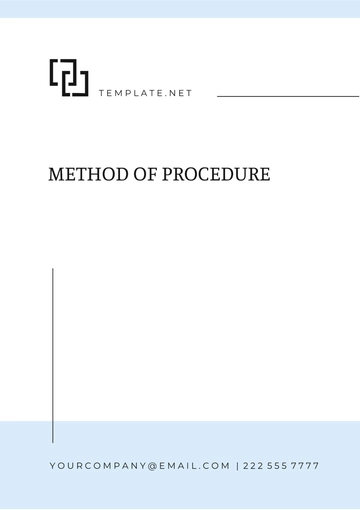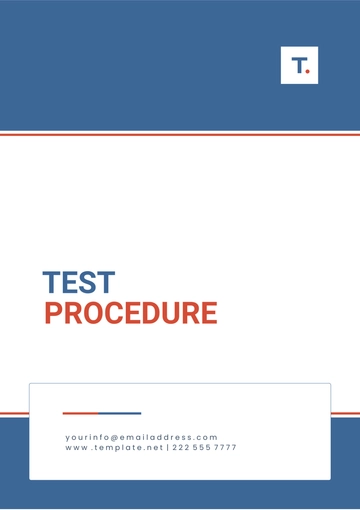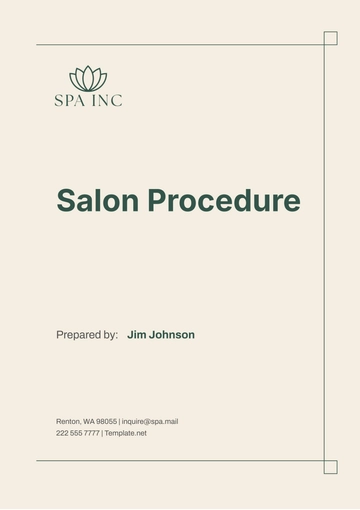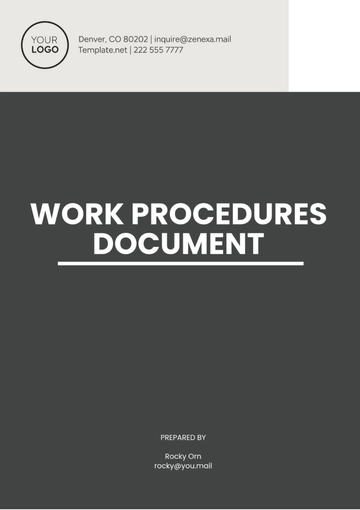Free Car Rental Complaints Procedure

I. Introduction
A. Purpose of the Procedure
The purpose of the Car Rental Complaints Procedure at [Your Company Name] is to establish a clear and effective process for customers to voice their concerns or complaints regarding our car rental services. This procedure aims to ensure that all complaints are addressed promptly, fairly, and transparently, thereby enhancing customer satisfaction and trust in our services. By having a formal complaints procedure, [Your Company Name] demonstrates its commitment to continuous improvement and customer service excellence.
B. Scope and Applicability
This procedure applies to all customers of [Your Company Name] who have rented a vehicle from us and wish to raise a complaint about any aspect of our service. It encompasses all types of complaints, including but not limited to issues related to vehicle condition, customer service, billing disputes, and reservation problems. The procedure is applicable to all branches and locations of [Your Company Name], ensuring a consistent approach to complaint handling across the entire organization.
C. Definition of a Complaint
A complaint is defined as any expression of dissatisfaction made by a customer regarding the products, services, or staff of [Your Company Name]. This can include verbal or written complaints about the quality of the vehicle, the behavior of staff, delays in service, inaccuracies in billing, or any other aspect of the car rental experience that did not meet the customer’s expectations. Understanding the nature of complaints is crucial for addressing them effectively and preventing recurrence.
II. Complaint Submission
A. Methods of Submission
To ensure ease of access for all customers, [Your Company Name] offers multiple methods for submitting complaints:
In-Person: Customers can visit any of our rental offices to submit their complaints directly to a staff member. This allows for immediate acknowledgment and initial assessment of the issue.
Online Form: An online complaint form is available on our website, providing a convenient way for customers to submit their complaints at any time.
Email: Customers can send their complaints via email to our dedicated customer service email address. This method allows for detailed descriptions and the attachment of supporting documents.
Phone: Our customer service hotline is available during business hours for customers to call and voice their complaints. This method offers immediate interaction with a customer service representative.
B. Information Required for Submission
To facilitate a thorough investigation and resolution of complaints, customers are required to provide the following information when submitting a complaint:
Customer Details: Name, contact information (phone number and email address), and rental agreement number.
Rental Agreement Information: Date of rental, location of rental, and vehicle details (make, model, and registration number).
Description of the Issue: A detailed account of the complaint, including dates, times, and names of any involved staff members.
Supporting Documents: Any relevant documents or evidence, such as rental agreements, receipts, photographs, or email correspondence.
By gathering comprehensive information upfront, [Your Company Name] can ensure a more efficient and effective complaint resolution process.
III. Acknowledgment of Complaint
A. Timeline for Acknowledgment
Upon receiving a complaint, [Your Company Name] commits to acknowledging receipt within 24 hours. This acknowledgment will be communicated to the customer via their preferred method of contact (email, phone, or in-person).
B. Confirmation of Receipt
The acknowledgment will include a confirmation of receipt, the name of the complaint handler assigned to the case, and an estimated timeline for the investigation and resolution process. This ensures that the customer is informed and aware of the next steps.
C. Initial Assessment
The complaint handler will conduct an initial assessment to categorize the complaint based on its nature and severity. This assessment will determine the appropriate course of action and the resources required for a thorough investigation. The initial assessment also involves verifying the information provided by the customer and identifying any immediate actions that can be taken to address the issue.
IV. Investigation
A. Assignment of a Complaint Handler
Each complaint will be assigned to a designated complaint handler, who will be responsible for managing the investigation and resolution process. The complaint handler will serve as the primary point of contact for the customer, ensuring consistent communication and updates throughout the process.
B. Gathering Information
The complaint handler will gather all necessary information to conduct a thorough investigation. This includes:
Customer Interview: Contacting the customer to gather additional details and clarify any information provided in the initial complaint submission.
Review of Rental Records: Examining the customer’s rental agreement, transaction history, and any relevant records related to the rental period in question.
Inspection of Vehicle: If the complaint involves the condition or performance of the rental vehicle, a detailed inspection will be conducted to verify the issue.
Consultation with Staff: Interviewing any staff members involved in the rental transaction or service interaction to gather their perspectives and account of the events.
By systematically collecting information from various sources, [Your Company Name] ensures that the investigation is comprehensive and objective.
C. Documentation of Findings
All findings from the investigation will be documented in a structured report, detailing the nature of the complaint, the steps taken during the investigation, and the evidence gathered. This report serves as the basis for determining the resolution and provides a clear record of the complaint handling process.
V. Resolution
A. Determining the Outcome
Based on the investigation findings, the complaint handler will determine the appropriate outcome. This involves assessing the validity of the complaint and the impact on the customer. The outcome can range from a simple apology to more substantial actions such as refunds or service adjustments.
B. Communication with Customer
The customer will be informed of the investigation findings and the proposed resolution. This communication will include a detailed explanation of the steps taken during the investigation and the rationale behind the resolution. Ensuring clear and transparent communication helps in maintaining customer trust and satisfaction.
C. Implementing the Resolution
The resolution will be implemented promptly once the customer has been informed. This may include:
Refunds: Issuing partial or full refunds to the customer’s payment method.
Discounts or Vouchers: Providing discounts on future rentals or issuing service vouchers as compensation.
Apologies: Offering a formal apology from [Your Company Name], acknowledging any inconvenience caused.
Corrective Actions: Implementing measures to address any systemic issues identified during the investigation to prevent recurrence.
By ensuring that resolutions are effectively implemented, [Your Company Name] demonstrates its commitment to customer satisfaction and service quality.
Table 1: Complaint Submission Information Requirements
Information Type | Details Needed |
|---|---|
Customer Details | Name, contact information (phone number and email address) |
Rental Agreement Information | Date of rental, location of rental, vehicle details |
Description of the Issue | Detailed account of the complaint |
Supporting Documents | Rental agreements, receipts, photographs, email correspondence |
Table 2: Investigation Steps and Sources
Investigation Step | Sources |
|---|---|
Customer Interview | Customer |
Review of Rental Records | Rental agreement, transaction history |
Inspection of Vehicle | Vehicle |
Consultation with Staff | Involved staff members |
VI. Follow-Up
A. Customer Satisfaction Survey
After the resolution of a complaint, [Your Company Name] will follow up with the customer to gauge their satisfaction with the complaint handling process and the resolution provided. This is typically done through a customer satisfaction survey sent via email or conducted over the phone. The survey will ask the customer to rate various aspects of their experience, including the speed of the resolution, the fairness of the outcome, and the professionalism of the staff involved. Feedback gathered from these surveys is invaluable in identifying areas for improvement and ensuring continuous enhancement of our complaint-handling procedures.
B. Monitoring of Resolution Implementation
Ensuring that the resolution has been effectively implemented is crucial. The complaint handler will monitor the situation to confirm that the agreed-upon resolution has been fully enacted. This may involve checking that refunds have been processed, ensuring that discounts or vouchers have been issued, and verifying that any corrective actions have been implemented. This follow-up step helps to maintain accountability and guarantees that the customer receives the promised resolution.
C. Further Assistance if Needed
If the customer is not satisfied with the initial resolution, [Your Company Name] will provide further assistance. The complaint can be escalated to a higher authority within the company, such as a senior manager or the customer service director. Additional steps will be taken to reassess the situation and find an acceptable solution. By offering continued support, [Your Company Name] shows its commitment to resolving issues to the customer's satisfaction.
VII. Record Keeping
A. Documentation of Complaints and Resolutions
Maintaining detailed records of all complaints and their resolutions is essential for effective complaint management. [Your Company Name] will document each complaint in a centralized database, including all relevant details such as the customer’s information, the nature of the complaint, the steps taken during the investigation, and the final resolution. This documentation provides a comprehensive history of each case and serves as a reference for any future issues.
B. Retention Period
Complaint records will be retained for a minimum period of five years. This retention period ensures that [Your Company Name] can refer back to past complaints if similar issues arise in the future and can use historical data to identify patterns or recurring problems. Proper retention also complies with any regulatory requirements regarding record-keeping.
C. Confidentiality
All complaint records will be treated with strict confidentiality. Access to these records will be restricted to authorized personnel only. [Your Company Name] is committed to protecting the privacy of its customers and ensuring that their personal information is handled in accordance with data protection regulations. By maintaining confidentiality, we uphold customer trust and comply with legal standards.
VIII. Continuous Improvement
A. Analysis of Complaint Trends
Regular analysis of complaint data is crucial for continuous improvement. [Your Company Name] will periodically review the complaints received to identify any common trends or recurring issues. This analysis helps to pinpoint areas where service improvements are needed and to develop strategies to address these issues proactively. By understanding the root causes of complaints, the company can implement measures to prevent similar problems in the future.
B. Training and Development for Staff
Based on the insights gained from complaint analysis, [Your Company Name] will provide targeted training and development programs for its staff. This training will focus on areas such as customer service skills, effective communication, and problem-solving techniques. By equipping staff with the necessary skills and knowledge, the company can enhance its overall service quality and reduce the likelihood of complaints.
C. Updates to Policies and Procedures
Continuous improvement also involves regularly updating policies and procedures based on feedback and complaint trends. [Your Company Name] will review its complaint handling procedure annually and make necessary amendments to ensure it remains effective and relevant. These updates will be communicated to all staff to ensure consistent implementation across the organization. By staying adaptable and responsive, [Your Company Name] can better meet customer expectations and improve overall service quality.
IX. Escalation Process
A. Internal Escalation
If a complaint cannot be resolved at the initial stage, it will be escalated internally to higher management levels. The escalation process involves the following steps:
To Supervisors: If the complaint handler is unable to resolve the issue, the complaint will be escalated to a supervisor. The supervisor will review the case, reassess the resolution, and communicate with the customer to seek a satisfactory outcome.
To Management: If the complaint remains unresolved after supervisor intervention, it will be further escalated to the management team. Senior managers will take a detailed look at the complaint and the actions taken so far, and they will have the authority to make higher-level decisions to resolve the issue. This may include offering additional compensation or making significant policy changes.
B. External Escalation
If the customer is still not satisfied after internal escalation, they have the option to escalate the complaint externally. This includes:
Regulatory Bodies: Customers can contact relevant regulatory bodies that oversee car rental services to lodge a formal complaint. These bodies can provide an impartial review of the case and ensure that [Your Company Name] complies with industry regulations and standards.
Consumer Protection Agencies: Customers can also reach out to consumer protection agencies that advocate for consumer rights. These agencies can offer mediation services and assist in resolving disputes between the customer and the company.
By providing a clear escalation process, [Your Company Name] ensures that customers have multiple avenues for seeking resolution and that their complaints are taken seriously at all levels.
X. Review and Revision of Procedure
A. Regular Reviews
The Car Rental Complaints Procedure will undergo regular reviews to ensure its effectiveness and relevance. These reviews will be conducted annually by a dedicated review team within [Your Company Name]. The team will assess the procedure’s performance, considering feedback from customers and staff, and will identify any areas that require improvement.
B. Amendments and Updates
Based on the findings from the regular reviews, amendments, and updates will be made to the procedure. This may involve revising existing steps, adding new protocols, or removing outdated practices. The goal is to continually refine the procedure to better meet customer needs and industry standards. All amendments will be documented, and the updated procedure will be communicated to all relevant staff members.
C. Communication of Changes to Staff
To ensure the effective implementation of the updated procedure, all changes will be clearly communicated to staff. This will involve:
Training Sessions: Conduct training sessions to educate staff on the new or revised steps in the complaints procedure. These sessions will provide detailed explanations and practical examples to ensure staff understand the changes.
Internal Memos and Updates: Sending out internal memos and updates through the company’s communication channels to inform staff of the changes. These communications will highlight key updates and provide instructions on how to access the full, revised procedure.
- 100% Customizable, free editor
- Access 1 Million+ Templates, photo’s & graphics
- Download or share as a template
- Click and replace photos, graphics, text, backgrounds
- Resize, crop, AI write & more
- Access advanced editor
Manage complaints systematically with Template.net's customizable and editable Car Rental Complaints Procedure Template. Utilize the AI Editor Tool to create structured procedures. Enhance customer satisfaction and issue resolution with this comprehensive and user-friendly template, ensuring effective complaint management.





























